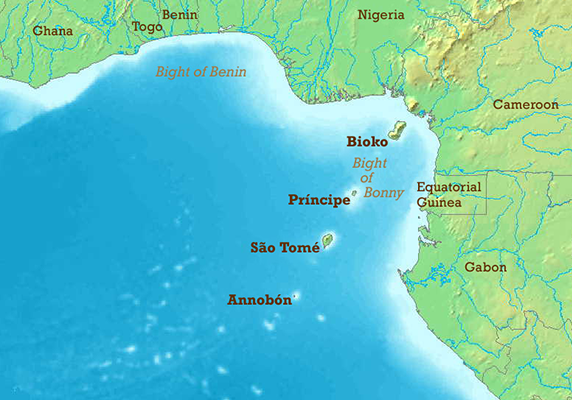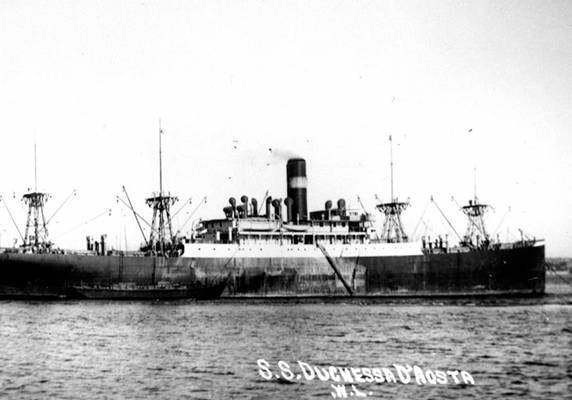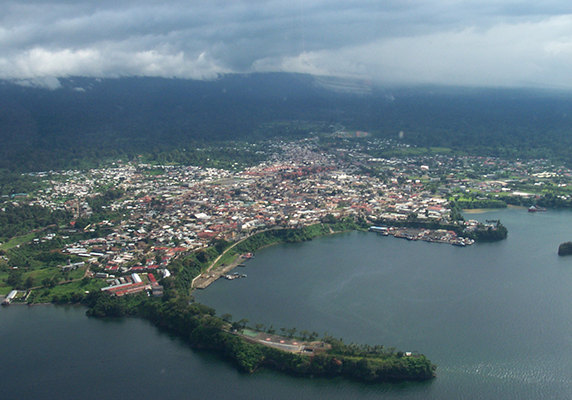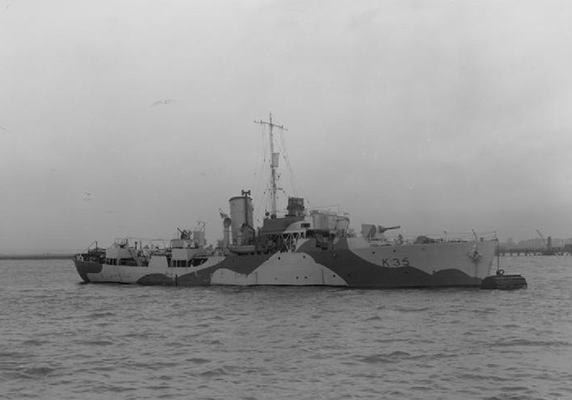Operation Postmaster was a British operation which took place on the Spanish island of Bioko, formerly known as Fernando Po. The operation’s objective was to board the Italian and German ships in the harbor and sail them to Lagos, putting a dent the area’s Axis Forces. What made the Operation Postmaster a rather grey area at the time was the fact that British authorities refused to support the raid, considering it a breach of Spanish neutrality. It was left up to the Small Scale Raiding Force (SSRF) and the Special Operations Executive (SOE) to carry out the mission.
The Plan Forms
The first inklings of Operation Postmaster began when, in 1941, the British Admiralty received reports that German submarines were refueling using the rivers in Vichy French sections of Africa. This was when the SSRF first became involved. This outfit was formed only a year earlier in 1941 and only consisted of a small group of 55 personnel working with the SOE. The specific unit of the SSRF, No.62 Commando, was itself under the command of Major Gustavus Henry March-Phillips.
A small, five man crew under the command of the Major left Poole (Dorset, England) on August 9, 1941, were travelling for West Africa. They made this voyage in a 65 ton Brixham yacht trawler, named Maid Honor. The rest of the SSRF, commanded by Captain Geoffrey Appleyard, had left earlier aboard a troop transport ship. All the troops later rendezvoused at Freetown, Sierra Leone, which was to be their base of operations.
The Gulf of Guinea. CC License

It was while the SSRF were searching Vichey French territory for signs of vessels that they met with SOE agents, who had become aware of three ships. These three craft occupied the port of Santa Isabel on the Spanish Island of Fernando Po. They were the Italian 8,500 ton Merchant vessel Duchessa d’Aosta, a large German tug Likomba, and a diesel-powered barge Bibundi.
The Duchessa d’Aosta was considered a threat because of its radio, which could potentially provide information about Allied naval movements. Though she claimed to carry supplies, such as wool and tanning materials, the first page of her manifest was missing. This led Allied Forces to believe she may well be carrying munitions. With this incentive, approval was for a military operation was given by the Admiralty on November 20, 1941.
A Hitch
The plan was to transport the raiders to the island in two tugs—Vulcan and Nuneaton—provided by the Governor of Nigeria. There would be 32 men, four SOE agents, 11 commandos from the SSRF and 17 men recruited from the local population to staff the tugs. However, their plan came into a snag. The British General Officer Commanding (GOC) West Africa Command, General Sir George Giffard refused to support the mission. He chose not to release the 17 men required due to his own plans, as well as the possibility of the act being regarded as piracy.
The Italian cargo liner Duchessa d'Aosta. Public Domain: Australian Copyright Council

That was not the only roadblock the operation faced. Because of Giffard’s refusal, the Admirality suspended the operation. The Foreign Office also did not support the operation; neither did the British Embassy in Madrid. Finally, the Foreign Office reignited their support on January 6, 1942, citing that British intervention was inevitable. As a final contingency, the Admiralty dispatched a craft to intercept the target vessels, with a cover story that they have been intercepted, trying to make their way to Europe.
The Mission
SOE agent Richard Lippett secured himself a job with the shipping company John Holt & Co (Liverpool), which had business on the island, as his cover story. While in his post, he began to make preparations for the raid. In his searching, he discovered that the crew of the Duchessa d’Aosta regularly accepted invitations to parties held ashore. The sailors had previously held a party aboard their own vessel on January 6, 1942. Lippett disguised himself as a party-goer to trawl for information about the ship’s readiness for sea, its crew, and the watch arrangements.
The raid itself took place a few days later on January 11. En route, they practiced their maneuvers, lower Folbots (a folding kayak) and boarding a ship at sea. Three days later, January 14, they approached Santa Isabel harbor. At 23:15 and 23:30, both tugs had taken up positions 180 meters outside the harbor. Back onshore, Lippett had arranged for the crew of the Duchessa d’Aosta to be invited to a dinner party. 12 Italian officers and two German officers from Likomba also attended.
Modern (2007) picture of Santa Isabel from the air. Ipisking at the English language Wikipedia

The raiders were in place on the decks of the two tugs as they entered the harbor. Vulcan had March-Phillips in command, who headed for Duchessa d’Aosta. While there were a few crew still on board the boat, they did not take much interest in the slowly approaching tug. During Vulcans journey, Folbots, under Hayes’ command from Nuneaton, paddled towards Likomba and Burundi, which were moored together.
A watchman on Burundi challenged the men coming towards the ship, but they managed to persuade him that they had the ship’s captain in their company, who was coming back on board. The three men in the Folbots boarded Burundi, and then the watch crew jumped overboard. The raiders proceeded to plant explosive charges on the anchor chain, then guided Nuneaton alongside Likomba to take her and the Burundi in tow.
When ready, the charges were blown. Nuneaton then began towing Likomba out of the harbor. Meanwhile, 11 men had managed to get aboard from Vulcan to Duchessa d’Aosta. One crew had planted explosives on the chains, while the others had searched below deck for prisoners. Despite the noise of the explosions, which had attracted people from the town, none tried to stop the ships from leaving. To add to this: several anti-aircraft armaments had begun firing on imaginary targets, believing the attacks came from the sky.
From the raiders entering the harbor to them leaving with the ships, it had taken around 30 minutes, with zero losses to the party.
On January 15, March-Phillips established a watch for the ships and placed guards for the 29 prisoners they had taken. The next day, Vulcan reached the rendezvous point with HMS Violet. However, Nuneaton, after suffering engine trouble, managed to contact help to tow them into port.
Flower class corvette HMS Violet. By Royal Navy official photographer

Debriefing
With Operation Postmaster, the SOE had shown that they were a very capable unit, able to work under a number of tight circumstances. However, the Spanish government were furious about the operation that they believed was a breach of neutrality.
Lippett remained on the island and was soon taken in for questioning by Spanish authorities. He managed to convince them that he had nothing to do with the raid. Though they believed him, they refused to let him leave the island. Undeterred, Lippett left secretly by canoe, arriving in British waters.
March-Phillipps was awarded the Distinguished Service Order, Hayes was awarded the Military Cross, and Appleyard a Bar to his Military Cross; Lippett and Guise were each appointed Member of the Order of the British Empire.